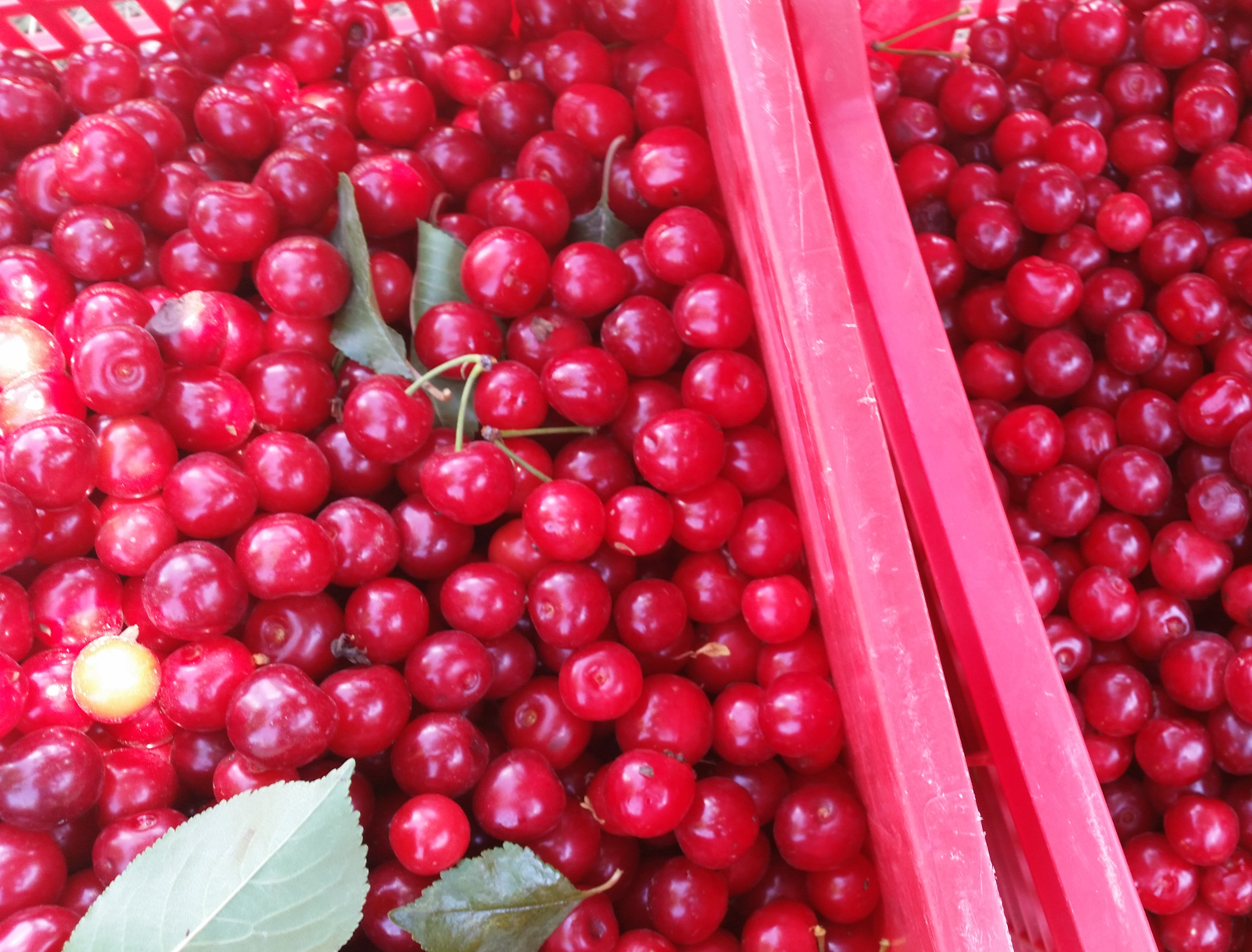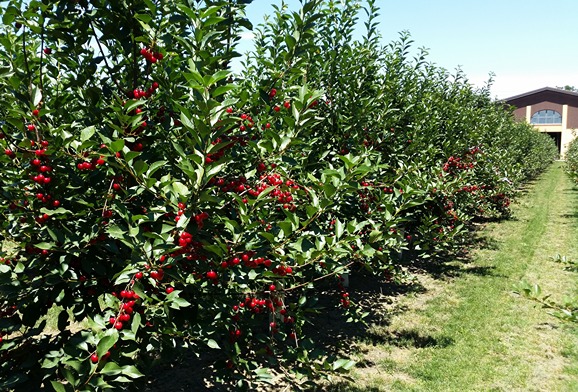Prof.ssa Giovanna Giacalone
Disafa – University of Turin (IT)
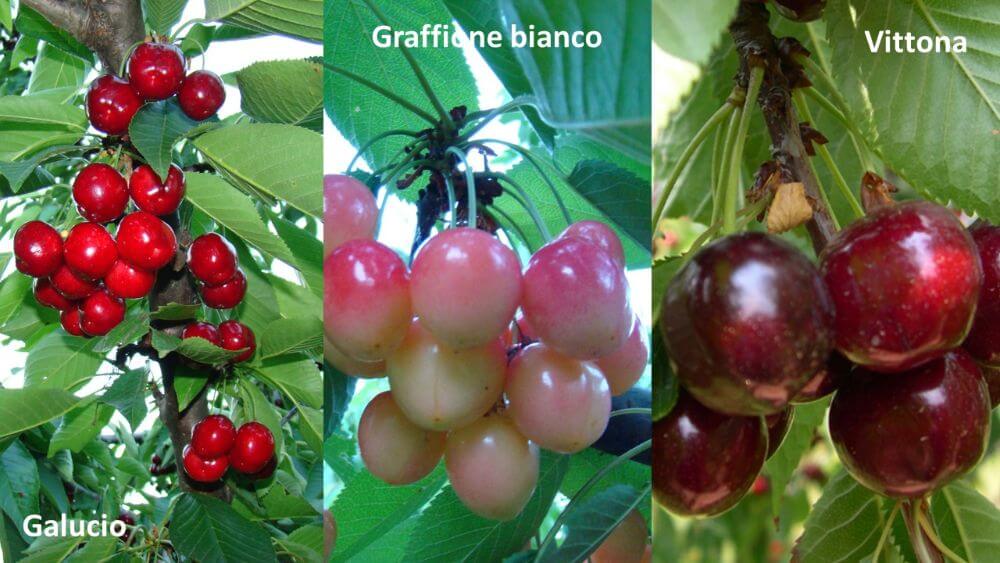
Galucio, Graffione bianco and Vittona, some of the traditional varieties cultivated in the Piedmont area of Pecetto
The project, financed by the Piedmont Region (Italy) in the framework of the 2014-2020* RDP, was created with different objectives: on the one hand to quantify and characterise the cherries of a traditional production area in the hills of Turin and on the other to find an outlet for the by-products of the processing industry and the product that cannot be placed on the fresh market.
The premises are that the production reality of Pecetto Torinese, while still recalling in the consumer's imagination an idea of tradition and quality, has nevertheless seen, despite some important exceptions, a progressive shrinking of the dedicated areas. The production reality, based mainly on traditional cultivation systems, has lost many operators and is in need of a substantial relaunch.
The project therefore moves on different levels. The first is to quantify in terms of areas and production the 'Pecetto cherries', for which there is a production specification. The second is to characterise from a biochemical and nutritional point of view the productions falling within the area covered by the specification.

Polyphenol content (mg GAE/100g pf) and total anthocyanins (mg cyan/100g pf) in some cultivars grown in the Pecetto Torinese (TO) area
Finally, the third aspect, which is the most ambitious, is to hypothesise a reuse of all that constitutes waste from both the fresh supply chain and the processing into juices and jams.
It is well known that cherries are rich in polyphenolic substances, anthocyanic and otherwise, and interest in these components is growing in the pharmaceutical, cosmetic and food sectors. The idea therefore is to sustainably extract from the waste, extracts rich in bioactive components for subsequent 'noble' reuse.
The pilot project sees the collaboration of several partners: the leader is the Agricoopecetto cooperative, which has involved a number of producers and Disafa - University of Turin. The University has developed a protocol for the extraction of bioactive substances from waste matrices (pulp and stalks) by means of MAE (microwave assisted extraction) technology using green solvents (NADES).
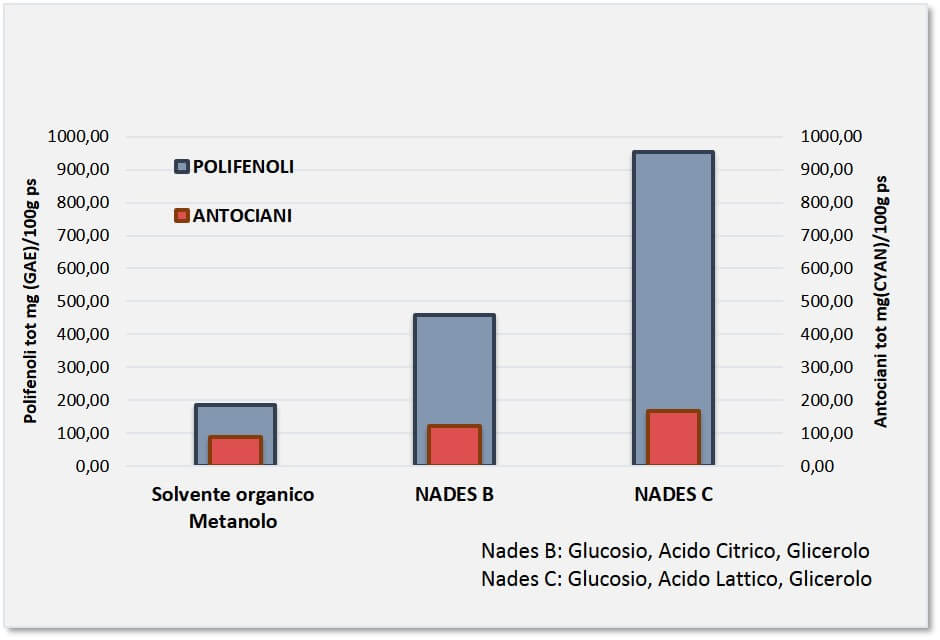
Contenuto in polifenoli (mg mg GAE/100g ps) e antociani totali (mg cyan/100 g ps) nell’estratto ottenuto da polpa di ciliegie con differenti solventi
That is, aqueous solutions of organic acids, sugars and amino acids in different proportions are used as solvents. By working on extraction temperatures and times, polyphenol-rich extracts are obtained ready for use, as there are no traces of solvent to be removed.
A pharmaceutical-cosmetic laboratory was then involved in the project and designed a line of products (creams and sunscreens) that exploit the antioxidant capacity of the extracts. Finally, the stones, suitably treated and ground, constitute microgranules inserted in different lines of scrubs.

Extraction process from cherry by-products
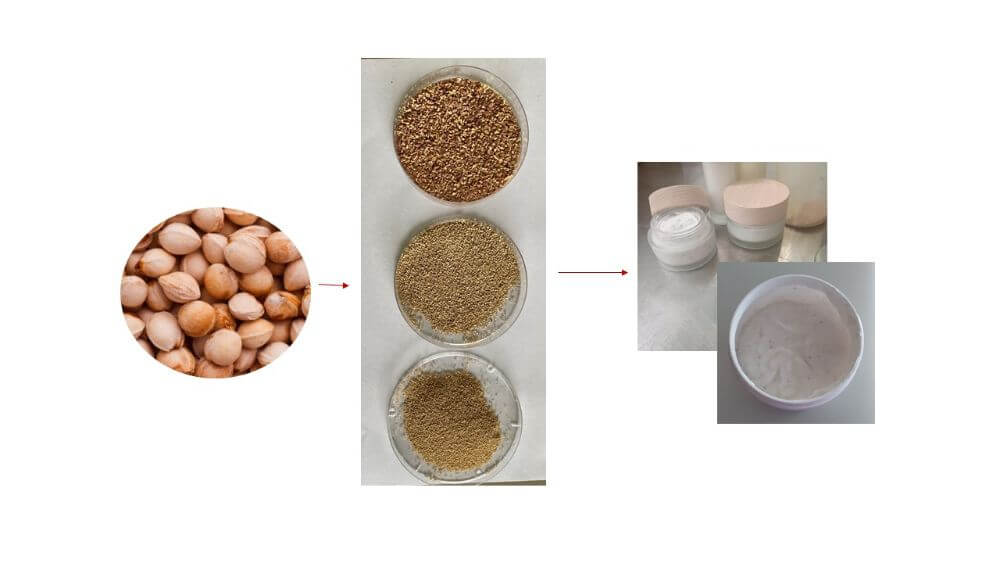
Stabilised and ground kernels in different grain sizes for different types of scrubs
The first results of the project were, on the one hand, a snapshot of the cherry sector of a small area with a great tradition behind it but the need for a relaunch, and on the other hand, the opening up of new possibilities of use not with a view to absorbing all the waste, but rather with a view to creating virtuous cycles to maintain the link with the territory.
Pecetto cherries, both traditional and commercial cultivars, have shown a very high content of nutraceutical substances, demonstrating once again how the cultivation area has a significant influence on product quality.
The extraction protocol developed was aimed at exploring new methods with innovative systems and the extracts obtained proved to be extremely rich in bioactives with values comparable or higher than those obtained with traditional solvents.
The line of cosmetic products, which has been realised, is at an advanced testing stage and it is expected that at the end of the project we will have a complete line of potentially reproducible and marketable products.
Cherry Times - Tutti i diritti riservati









